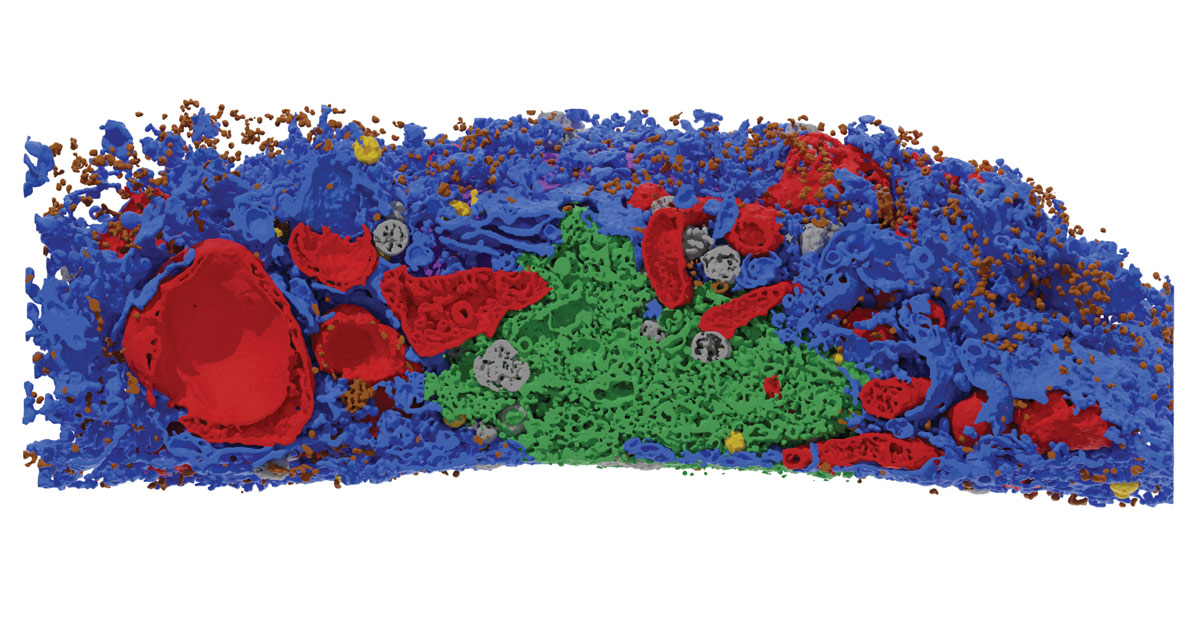Search

News & Events
Researchers uncover the hidden wonder of cellsResearchers from The Kids Research Institute Australia and The University of Western Australia have developed a new technique to see inside cells with unprecedented detail, revealing a complicated web of interactions that provides new insights into how cells stay healthy.
Research
Systems biology of mitochondrial diseasesInvestigators: Professor Aleksandra Filipovska, Dr Stefan Siira Project description This project will focus on new and cutting-edge development of
Research
A common genetic variant of a mitochondrial RNA processing enzyme predisposes to insulin resistanceMitochondrial energy metabolism plays an important role in the pathophysiology of insulin resistance. Recently, a missense N437S variant was identified in the MRPP3 gene, which encodes a mitochondrial RNA processing enzyme within the RNase P complex, with predicted impact on metabolism. We used CRISPR-Cas9 genome editing to introduce this variant into the mouse Mrpp3 gene and show that the variant causes insulin resistance on a high-fat diet.
Research
Hyperactive Nickase Activity Improves Adenine Base EditingBase editing technologies enable programmable single-nucleotide changes in target DNA without double-stranded DNA breaks. Adenine base editors (ABEs) allow precise conversion of adenine to guanine. However, limited availability of optimized deaminases as well as their variable efficiencies across different target sequences can limit the ability of ABEs to achieve effective adenine editing.
Research
Engineering new tools to improve energy metabolismAleksandra Filipovska BSc PhD Louis Landau Chair in Child Health Research; NHMRC Leadership Fellow; Deputy Director, ARC Centre of Excellence for
Research
The mitophagy receptors BNIP3 and NIX mediate tight attachment and expansion of the isolation membrane to mitochondriaBNIP3 and NIX are the main receptors for mitophagy, but their mechanisms of action remain elusive. Here, we used correlative light EM (CLEM) and electron tomography to reveal the tight attachment of isolation membranes (IMs) to mitochondrial protrusions, often connected with ER via thin tubular and/or linear structures.
Research
The FASTK family proteins fine-tune mitochondrial RNA processingTranscription of the human mitochondrial genome and correct processing of the two long polycistronic transcripts are crucial for oxidative phosphorylation. According to the tRNA punctuation model, nucleolytic processing of these large precursor transcripts occurs mainly through the excision of the tRNAs that flank most rRNAs and mRNAs.
Research
Preventative therapeutic approaches for hypertrophic cardiomyopathySarcomeric gene mutations are associated with the development of hypertrophic cardiomyopathy (HCM). Current drug therapeutics for HCM patients are effective in relieving symptoms, but do not prevent or reverse disease progression. Moreover, due to heterogeneity in the clinical manifestations of the disease, patients experience variable outcomes in response to therapeutics.
Research
Illuminating mitochondrial translation through mouse modelsMitochondria are hubs of metabolic activity with a major role in ATP conversion by oxidative phosphorylation (OXPHOS). The mammalian mitochondrial genome encodes 11 mRNAs encoding 13 OXPHOS proteins along with 2 rRNAs and 22 tRNAs, that facilitate their translation on mitoribosomes.
Research
Unique architectural features of mammalian mitochondrial protein synthesisMitochondria rely on coordinated expression of their own mitochondrial DNA (mtDNA) with that of the nuclear genome for their biogenesis. The bacterial ancestry of mitochondria has given rise to unique and idiosyncratic features of the mtDNA and its expression machinery that can be specific to different organisms. In animals, the mitochondrial protein synthesis machinery has acquired many new components and mechanisms over evolution.
